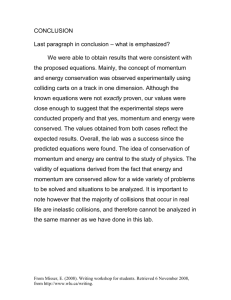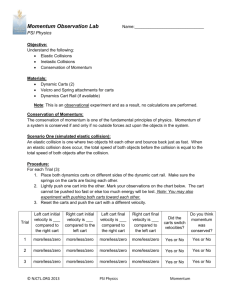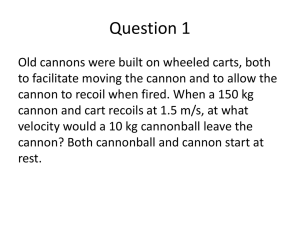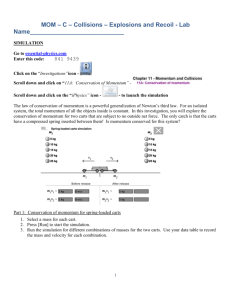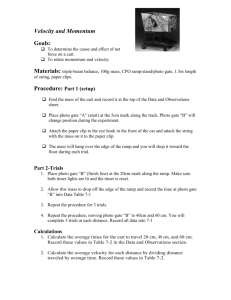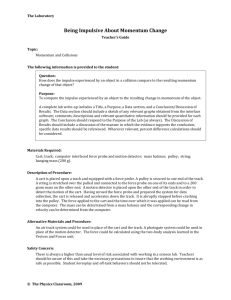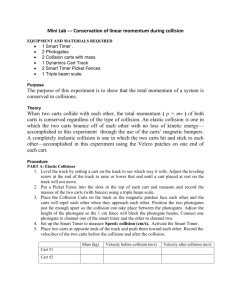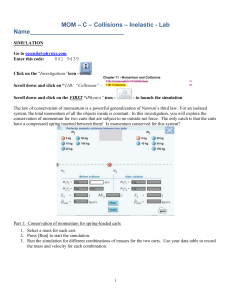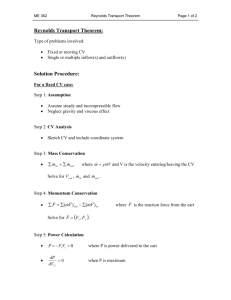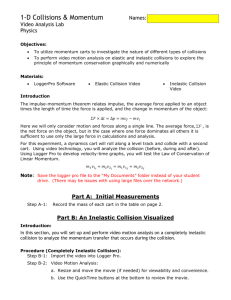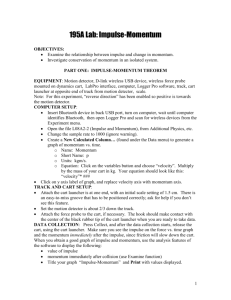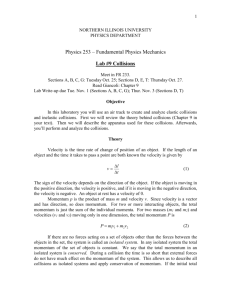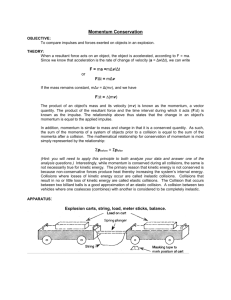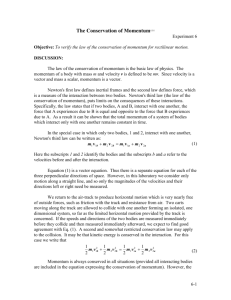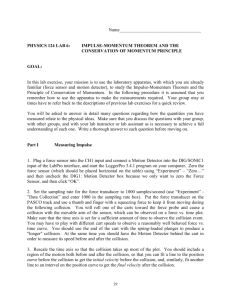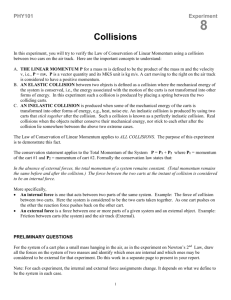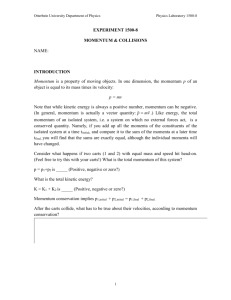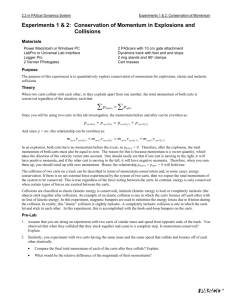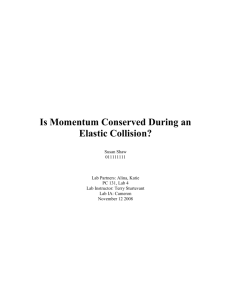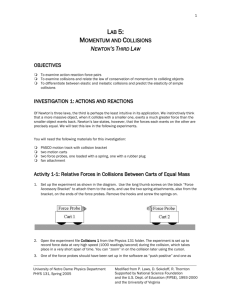Lab Experiment 1- Conservation of Momentum
advertisement
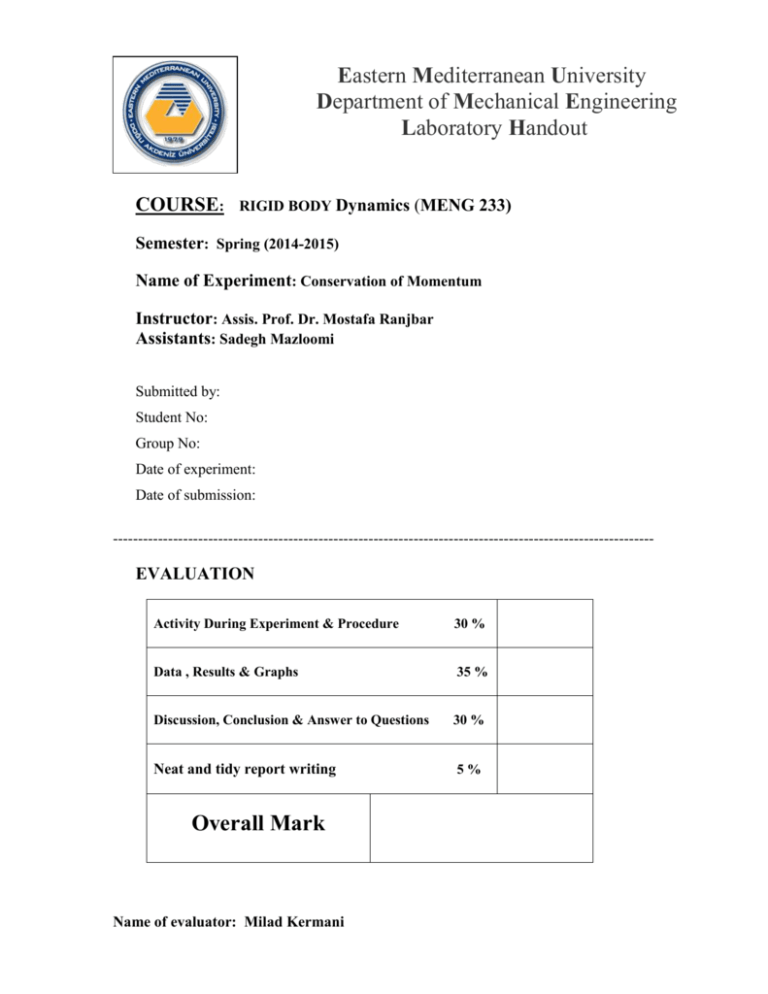
Eastern Mediterranean University Department of Mechanical Engineering Laboratory Handout COURSE: RIGID BODY Dynamics (MENG 233) Semester: Spring (2014-2015) Name of Experiment: Conservation of Momentum Instructor: Assis. Prof. Dr. Mostafa Ranjbar Assistants: Sadegh Mazloomi Submitted by: Student No: Group No: Date of experiment: Date of submission: ------------------------------------------------------------------------------------------------------------ EVALUATION Activity During Experiment & Procedure 30 % Data , Results & Graphs 35 % Discussion, Conclusion & Answer to Questions 30 % Neat and tidy report writing 5% Overall Mark Name of evaluator: Milad Kermani 1. OBJECTIVES The aim of the experiment is to observe the conservation of momentum experimentally. 2. APPARATUS Data collector, two motion sensors, horizontal track, two carts. Figure 1: collision set-up 3. THEORY How is it possible for two carts to collide head-on and come to a complete stop? Why is it that when a heavy vehicle collides with a lightweight vehicle, the two of them continue in the general direction the heavy vehicle was going before it collided? Collisions between objects—whether locomotives shopping carts, or your foot and the sidewalk—can be complicated. Yet even in the most chaotic of collisions, as long as there are no external forces acting on the colliding objects, one principle always holds and provides an excellent tool for understanding the dynamics of the collision. That principle is called the conservation of momentum. When studying the effect of car slamming into a train we say the car had an inelastic collision because the car stayed in contact with the train after the collision. If the car had bounced off the train then an elastic collision would have occurred. 4. WORK TO BE CARRIED OUT Set up the equipment as shown in the figure 1. Place the track on a horizontal surface. Level the track by placing a cart on the track. If the cart rolls one way or the other, use the adjustable foot at one end of the track to raise or lower that end until the track is level and the cart will not roll one way or the other. Adjust each sensor so it can measure the motion of a cart as it moves from the end of the track to the middle and back again. Add a 250-g mass to each cart and measure the total mass of each cart. Record their masses in the data table on the Student Response Sheet. Place Mass Cart 1 on the left side of the track. Place Mass Cart 2 on the right side of the track. Turn the carts so the Velcro on each car will stick together when the carts collide. Measure the velocity of both cart before and after the collision and record the dat. Find the initial and final momentum as well as right before and after the strike. Iterate the experiment to higher the preciseness of your data. m1(v1)1 + m2(v2)1 = m1(v1)2 + m2(v2)2 (1) 5. EXPERIMENTAL DATA Before Collision Velocity Iteration Cart 1 Cart 2 After Collision Momentum Cart 1 Cart 2 Velocity Cart 1 Cart 2 Momentum Cart 1 One Two Three Table1: Observed and recorded data 6. Vocabulary Use available resources to find the definitions of the following terms: Elastic collision: Inelastic collision: Momentum: 7. DATA ANALYSIS Check the observed data by the aid of equation one. Uncertainties should be taken into account to have the preciseness and error analysis in your reports. Write the error analysis. 8. GRAPH Plot the graphs of velocity and momentum of each cart once separately and once all together versus time. Cart 2 9. ANSWER THE FOLLOWING QUESTIONS - What can you conclude about the relationship between the momentum before and after an inelastic collision? - - Do your results support your predictions? - How the momentum equation is created? - How the momentum conservation is created? - Explain the reason why a spaceship can start flying and leave the earth through conservation of momentum concept. 10. DISCUSSION, CONCLUSION & ANSWER TO QUESTIONS State your observation during the experiment. Support your memo by mentioning the error sources which affect the accuracy of results and analysis.

